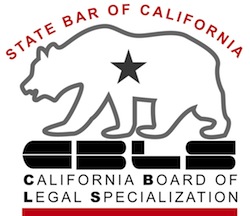Convincing clients that all of their debts must be included in bankruptcy is one of the hardest parts of being a bankruptcy lawyer.
The struggle often seems Herculean.
Sometimes, they will tell me they don’t want to include their car loan in the case because they “need the car”.
Sometimes I find the student loan payment in the budget but not on the list of creditors.
Or there’s a creditor they don’t want to know about the bankruptcy.
Part of the issue, I’ve figured out, is confusion between scheduling a debt and discharging the debt.
Listed not the same as discharged
When you file bankruptcy, you are required to list all debts and or risk denial of discharge if you don’t.
After all, you sign the schedules under penalty of perjury. One of the standard questions the trustee asks at the first meeting of creditors is “did you list all of your debts”.
You need to be able to say, honestly, “yes”.
However, debts are not necessarily discharged just because they are listed.
The Bankruptcy Code specifies a number of debts that simply aren’t dischargeable in bankruptcy. Those debts still must be listed.
Debts secured by your assets must be listed, even though the lien on the asset will survive the bankruptcy.
The bankruptcy bargain involves making full disclosure of your financial situation in exchange for the discharge.
Debts after bankruptcy
The desire to exclude debts from the schedules is sometimes fanned because debtors don’t know that they can reaffirm debts during their case.
A reaffirmation agreement essentially waives the discharge as to that particular debt. A reaffirmation agreement puts the parties back on the same legal footing as they had before the bankruptcy was filed.
Reaffirm the car loan and you are protected against repossession as long as you make the payments as you did before bankruptcy.
More on keeping your car through bankruptcy
You can keep paying
Clients are frequently surprised when they learn that they can continue to pay a discharged debt voluntarily if they wish. The Bankruptcy Code says so explicitly:
Nothing … prevents a debtor from voluntarily repaying any debt.
Bankruptcy Code Section 524(f)
Pay the dentist after the case is filed if you wish, but list them in the bankruptcy if you owe money when the case is filed.
The advantage to paying a debt voluntarily after discharge is that if your circumstances change or your view of the importance of that creditor changes, you can stop paying without legal consequences.
Some clients “love” their credit card issuer and want to keep paying because of loyalty or out of fear of being without plastic.
I have to tell them the sad news that the love is one-sided. The issuer has other ways to find out about the bankruptcy case and may cancel the card independently of being listed or not in the case.
Moral of the story, there are a number of options for debts post filing, so don’t get tripped up by leaving out creditors. Everything is included in bankruptcy.
More
Who you need to pay after bankruptcy
If you left a creditor out of your bankruptcy papers
Image credit: Monidas de Mon and Flickr






